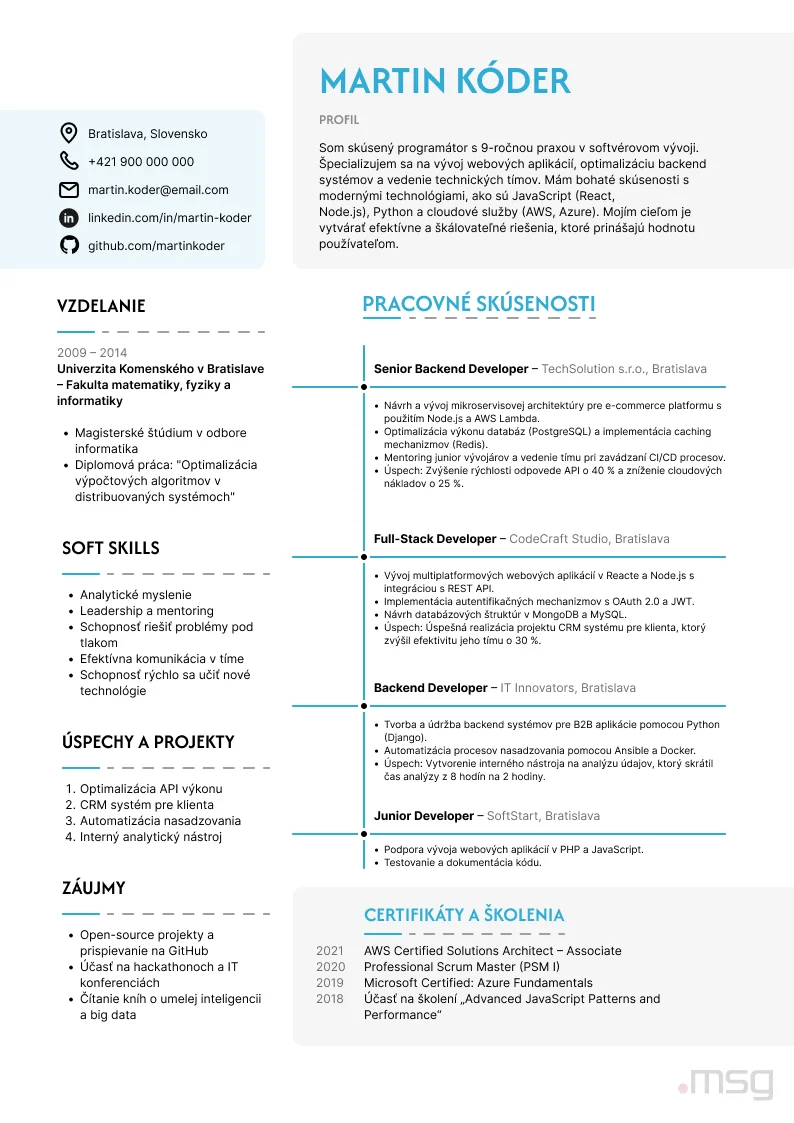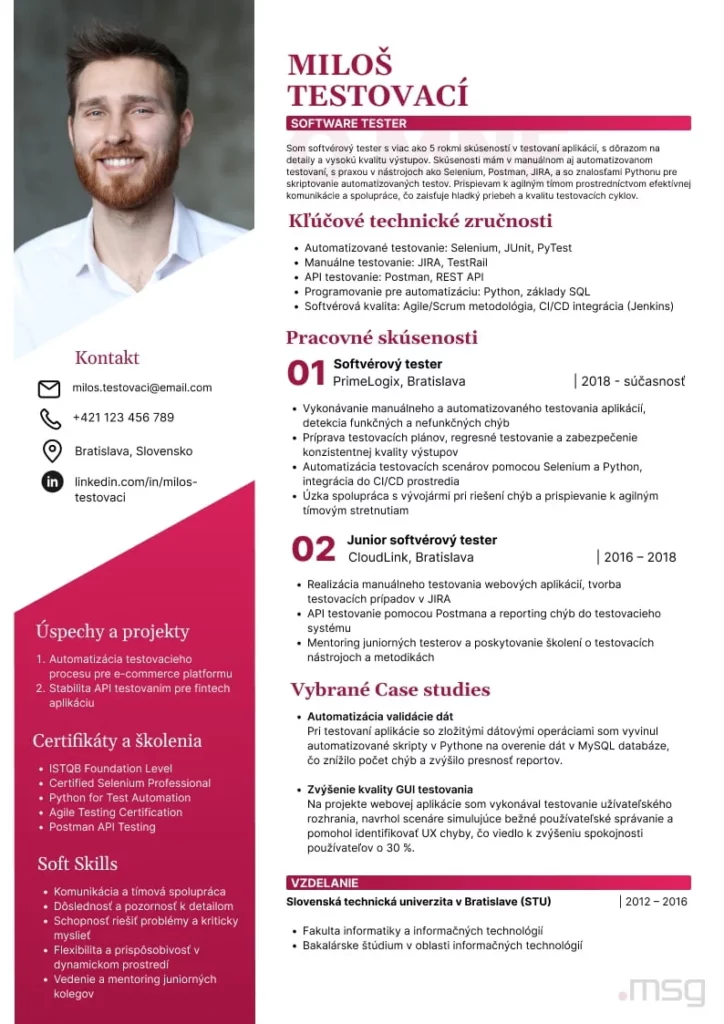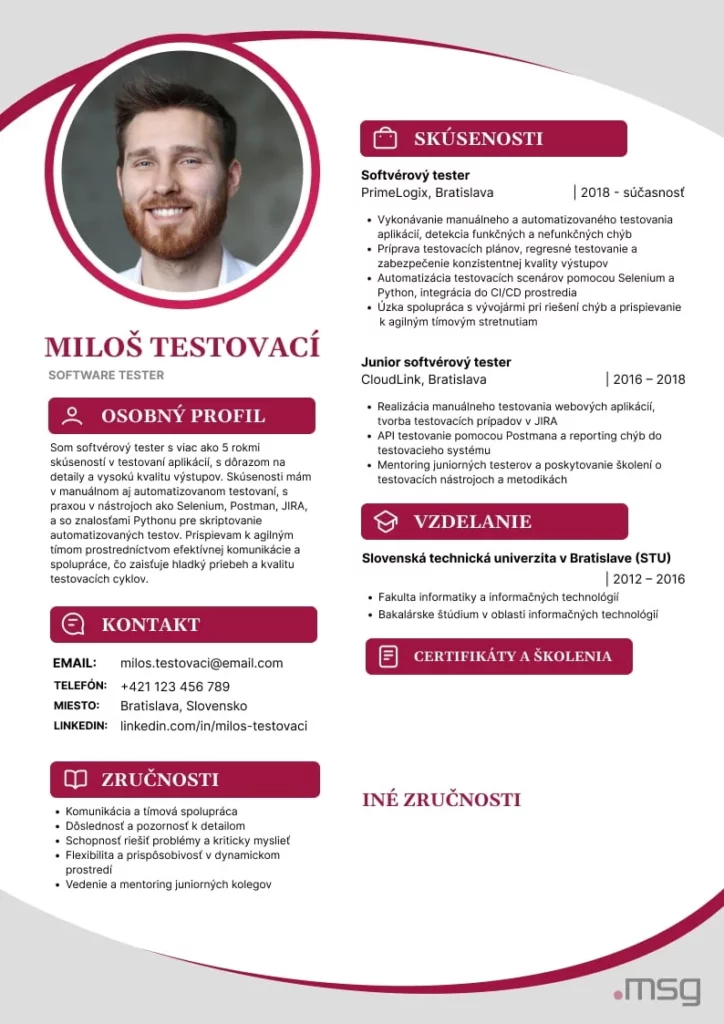Structured CV: What makes it distinctive and what does it look like?
In the article you will learn:

In the article you will learn:
- What is a structured CV and what makes it distinctive.
- What types of structured CV do we know.
- What to watch out for when writing it.
Structured CV – a phrase that everyone who has looked for a job at least once in their life has come across. It is required by many employers, and a template for it is provided by several programs that will make it easier for you to create. But how does a structured CV differ from other types and what to look out for when writing one? We’ve got all the key information to help you get to the interview.
What is a structured CV?
A structured CV is a simple document that contains all the information found in any type of CV. This means that you should include:
- your personal data and personal profile,
- work experience,
- level of education,
- technical or language skills,
- additional information about your strengths.
So what makes a structured CV different from others? The most striking feature is that it is clear and concise. You write the information concisely and in words – usually describing it in just a few words or shorter sentences.
Most of the information is presented in bullet points, with each section of the CV separated by a distinctive subheading or horizontal line. This makes the document easy to read and the recruiter can find all the necessary information in a fraction of a second.
What makes a structured CV distinctive?
Creating a structured CV is much easier when you have a clear picture about it. The following characteristics will help you do this:
- Clear and logical structure – as we have already mentioned, this type of CV is written in bullet points and short sentences. You only include the essentials, such as the title of the jobs you worked at, the period of time you worked there, the name of your high school or university, your language skills, etc.
- Relevance – by writing only briefly about each job or educational background in a structured CV, you avoid the risk of providing unnecessary and irrelevant information that could come across as unprofessional.
- Data organisation – you can organise the data in the structured CV in several ways. Whichever you choose, they are all clear and ensure that the document is not messy and reads well.
- Presenting achievements and skills – by presenting information only in bullet points and not in long sentences, you allow your achievements and skills to stand out. The recruiter will immediately notice your work experience, education, etc.

- Formal appearance – when you look at a structured CV template, you’ll notice that it’s simple. As a rule, it has a white background with a black font in a uniform size. This makes it look professional and suitable for almost every industry and job.
- Customisation – A structured CV may not offer the creative possibilities of a modern CV, but that doesn’t mean you can’t customise it. Feel free to add optional sections such as personal interests or references. However, always make sure that the information you provide to a potential employer is relevant.
- Attachments – A structured CV is usually accompanied by attachments that reveal more about your work experience or personal qualities. These include, for example, a motiovational letter. In it, you should mention why you are interested in the job offer and what you can offer to the employer. Other attachments can be references and a cover letter, which you write either as a separate document or in the body of the email.
What are the advantages and disadvantages of a structured CV?
When you decide on this type of CV, you should know what are its biggest advantages and disadvantages.
Benefits include:
- It is clear and simple– it gives all the information about you directly and without unnecessary “cotton wool”.
- It is suitable for almost all job roles – most industries now prefer a minimalist and simple CV, such as this structured one. This is because recruiters don’t have time to read long paragraphs, such as in a fictionalized CV.
- It’s very easy to write – listing work experience or skills in bullet points can be done by absolutely anyone. What’s more, today there are a number of programs that can help you create a document.
- It has a professional design that you’ll never go wrong with – as long as you don’t combine different sizes, colours and font types, you don’t have to worry about your CV looking messy or unprofessional.
On the other hand, a structured CV also has its disadvantages, which are:
- Sometimes it’s too brief – recruiters may miss important information about you that could help them decide whether to hire you for the job. It’s therefore ideal to supplement it with additional attachments such as references or a cover letter.
- It is not original – although a structured CV is very practical and recruiters will get a lot of important information from it, it is not original at all. Your document will be no different from those sent by other candidates. Therefore, it can be difficult to impress and stand out from the crowd.
Structured CV – template and basic structure
According to the type of structure, we divide the structured CV into three basic categories:
- chronological biography,
- professional CV,
- Combined CV.
We’ll talk more about each.
Chronological biography
The chronological structured curriculum vitae is one of the most widely used. It is characterised by its focus on your work experience, which it prioritises above all others. That’s why this information is more comprehensive and is at the top, usually just below personal details such as phone number or address.
Under work experience, education is listed, followed by skills and abilities, and then additional information you would like to use in a future job. However, all of this information is only given very briefly.
The advantage of a chronological structure is that it is established and highlights your work achievements. On the other hand, the disadvantage is that it is used by almost everyone and is therefore the least original of all.
A sample chronological biography looks something like this:
- personal and contact details,
- work experience,
- education,
- skills,
- additional optional sections – interests, driving licence, etc.
Professional CV
A professional CV, sometimes referred to as a functional CV, focuses mainly on your skills, such as knowledge of a foreign language or operating programs. It also focuses on your strengths, which may include meeting deadlines, ability to work under stress, flexibility, and so on.
You should choose two to four skills to describe in bullet points on your CV. You can mention how you used them in your last job, where you acquired them or how you would like to use them if you get the job.
A professional CV has several advantages. Among them is that it is more original than a chronological one. By highlighting your strengths right at the beginning, you slightly distract from the weaker job section. The downside, however, is that some recruiters may not be satisfied with brief information about your career.
This type of CV is particularly ideal for:
- high school and university graduates who have no hands-on experience in the field,
- people with significant gaps in their working lives (they have not worked for several months or years),
- people who have decided to change careers and this is their first job in a new field of work.
And what are the elements of a structured CV? The template generally looks like this:
- personal and contact details,
- a summary of the skills and a short description of them,
- education,
- work experience,
- optional sections.

Combined CV
The combined CV represents a happy medium between the chronological and the professional structured CV. It is characterised by giving equal space to work experience and skills. It’s a great choice for those who have a career path without major gaps, while possessing multiple practical and relevant skills.
The strength of the combined structure is that it provides comprehensive information from both areas, not just one. However, the disadvantage can be more complicated to prepare, as this type of CV is the most comprehensive of the three.
To maintain a balance between the two parts, it is good to stick to this structure:
- personal and contact details,
- relevant skills,
- work experience,
- education and study experience,
- optional sections.

At the same time, try to make the skills and work experience sections similar in length.
Which structure to choose?
The choice of structure is up to you and your needs. Most people choose a chronological structure focused on work experience, as this is the form most often expected by recruiters in Slovakia.
However, if you’re a recent high school or college graduate, or if you haven’t worked in the field before, bet on the career structure. If you want to elevate both your personal skills and your professional achievements, choose a combined structure.
CV formatting
Formatting is key because it affects the look of your CV and the first impression you make. So stick to these rules:
- Choose one font to use throughout the document.
- The font size may be different in subheadings that separate different parts of the document.
- The subheadings can be a different colour, but don’t complicate it unnecessarily.
- A structured CV should be one, maximum two pages long.
- Save the finished document as a PDF that opens without problems on any device.
- Make sure you have equal alignment and consistent spacing throughout the document.
In what areas is a structured CV used?
Today, the structured CV is used in almost all fields, including administration, government, banking, management and services. It is particularly advantageous for recruiters who can go through it very quickly and find out what your strengths are and whether you are a suitable candidate.
The one exception where a resume with a clear minimalist structure might not be the ideal choice is in creative fields. In those, potential employers may expect a document that is more elaborate in design.
Try creating a structured CV
A structured CV is clear, logical and simple. It gives recruiters all the key information about you and helps you land your dream job. Use the tips we’ve given you to quickly and easily create a professional CV that’s eye-catching and free from unnecessary mistakes.
